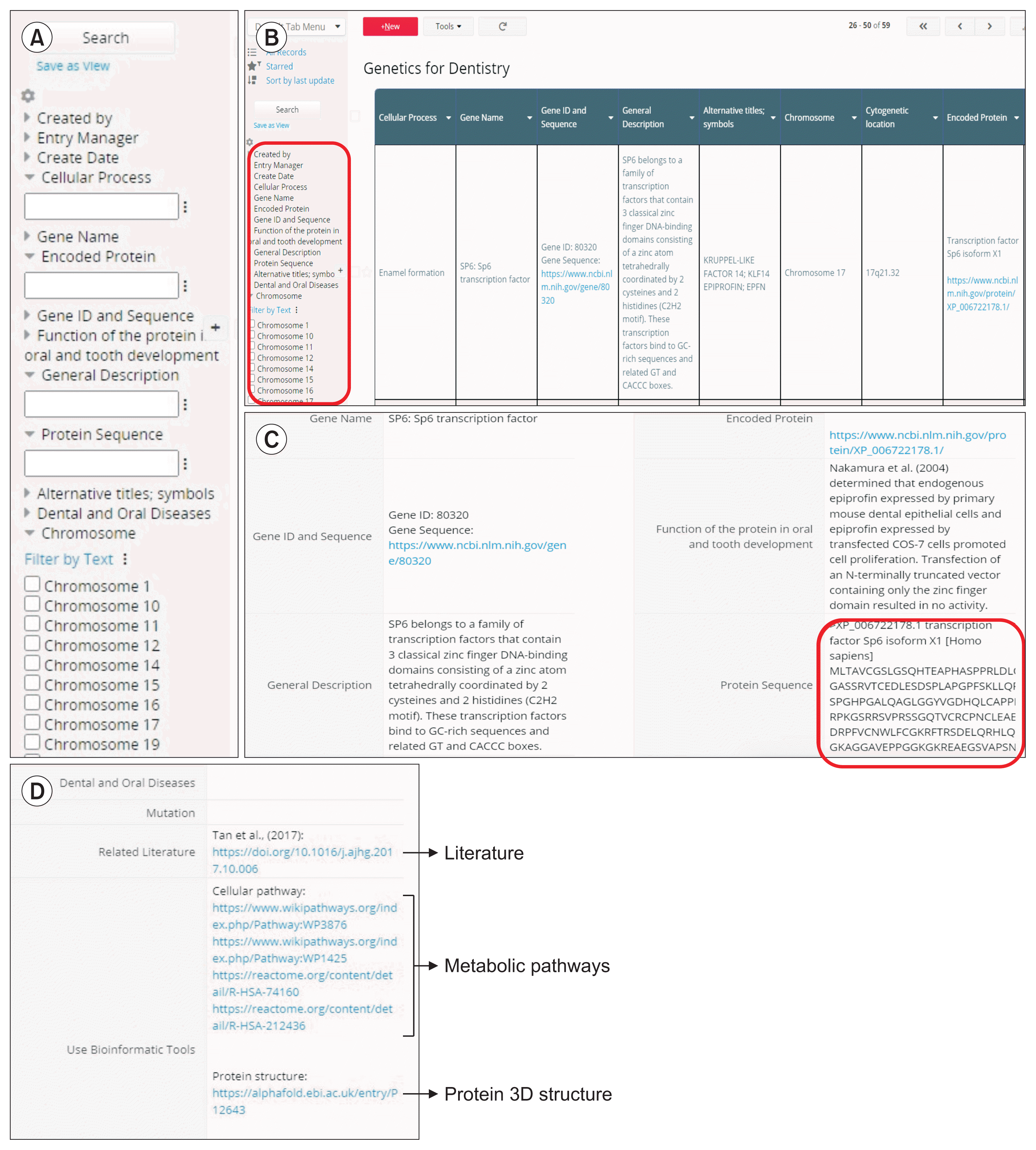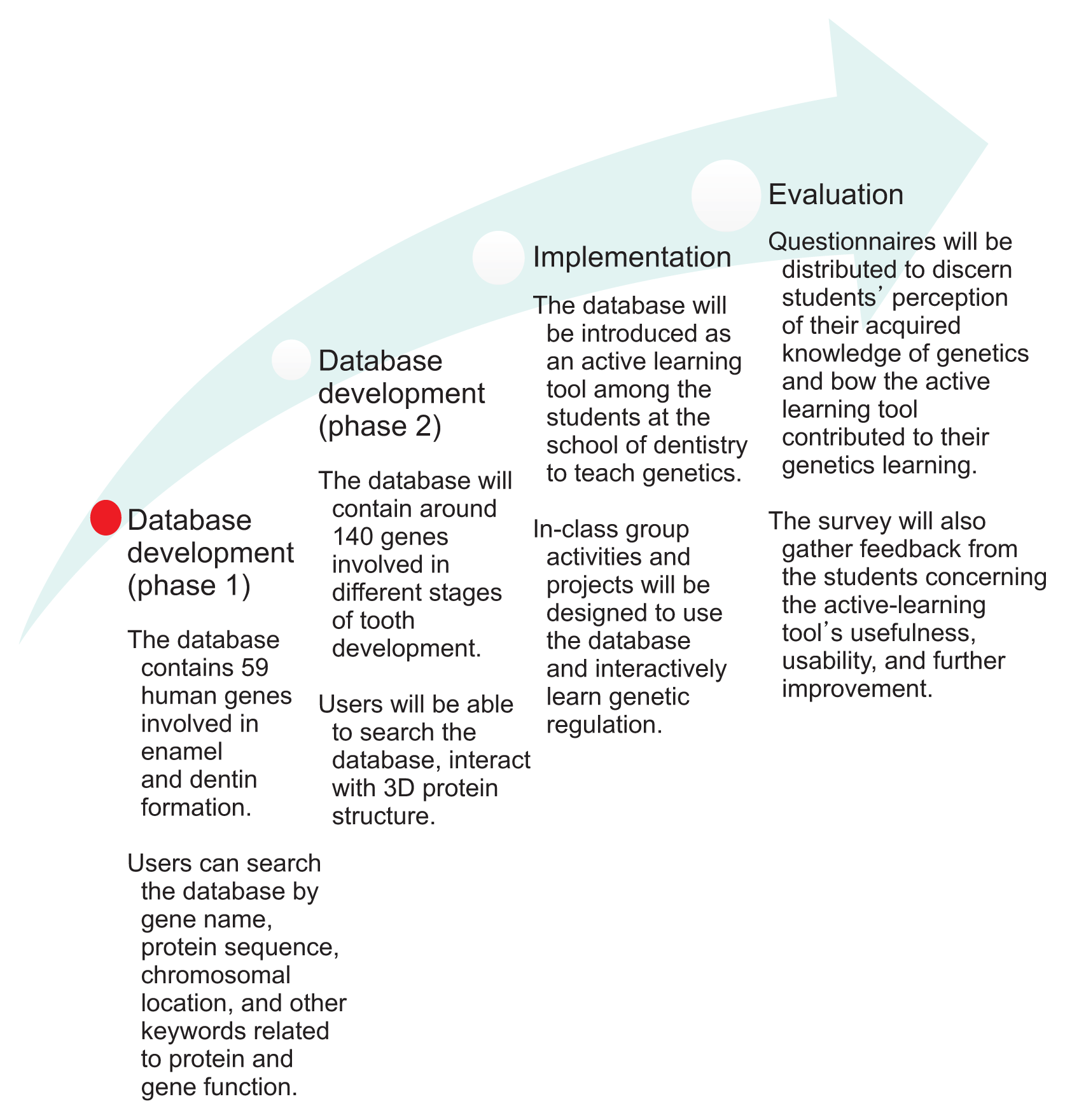I. Introduction
II. Methods
1. Data Collection and Curation
Table 1
| Database content | Description | Primary source |
|---|---|---|
| Information about the gene, access to DNA sequence | Users can access the gene name, symbol, gene ID, general description of the gene, and the DNA sequence. | National Library of Medicine [5,21] (https://www.ncbi.nlm.nih.gov/gene) |
| Chromosome location | The location of the gene in the chromosome with its specific cytogenetic position is listed in the database. | OMIM: Online Mendelian Inheritance in Man [20] (https://www.omim.org/) |
| Protein sequence | Users can learn the names of protein(s) encoded by the gene and obtain the entire protein sequence. | National Library of Medicine [21] (https://www.ncbi.nlm.nih.gov/protein/) |
| Three-dimensional protein structure | The dataset provides access to the three-dimensional protein structure and homology models. | AlphaFold Protein Structure Database [16] (https://alphafold.ebi.ac.uk/) |
| Cellular pathways | Users have access to cellular and metabolic pathways where the listed protein is known to play roles. |
Reactome pathway knowledgebase [17] (https://reactome.org/) WikiPathways [18] (https://www.wikipathways.org/) |
| Function of the protein in oral and tooth development | The dental and oral-specific functions of the gene are listed in the database. | PubMed [19] (https://pubmed.ncbi.nlm.nih.gov/) |
| Mutations | Mutations identified in the gene that cause dental and oral diseases are listed in the database. |
OMIM: Online Mendelian Inheritance in Man [20] (https://www.omim.org/) PubMed [19] (https://pubmed.ncbi.nlm.nih.gov/) |
| Dental and oral disease | If a mutation is known to cause an oral or dental disorder, a description of that physiological condition or developmental anomaly is listed in the database. |
OMIM: Online Mendelian Inheritance in Man [20] (https://www.omim.org/) PubMed [19] (https://pubmed.ncbi.nlm.nih.gov/) |
2. Data Validation and Database Modeling
3. Incorporation of Data in the Database
4. Expansion and Application of the Database as an Active Learning Tool
III. Results
 | Figure 3Snapshot from the “Genetics for Dentistry” database. (A) The database enables users to search data by cellular process (enamel or dentin formation), gene name, protein sequence, protein function, or chromosome number. (B) The home page of the database, with the search options on the left (red box). (C) Selecting an individual gene will open its page, showing details of all the information. Protein sequences are shown in a red box. This page also provides external links to the gene sequence, protein page from NCBI (National Center for Biotechnology Information), original literature, metabolic pathways, and the three-dimensional structure of the protein. The access to the external links is enlarged and shown in (D). |




 PDF
PDF Citation
Citation Print
Print





 XML Download
XML Download